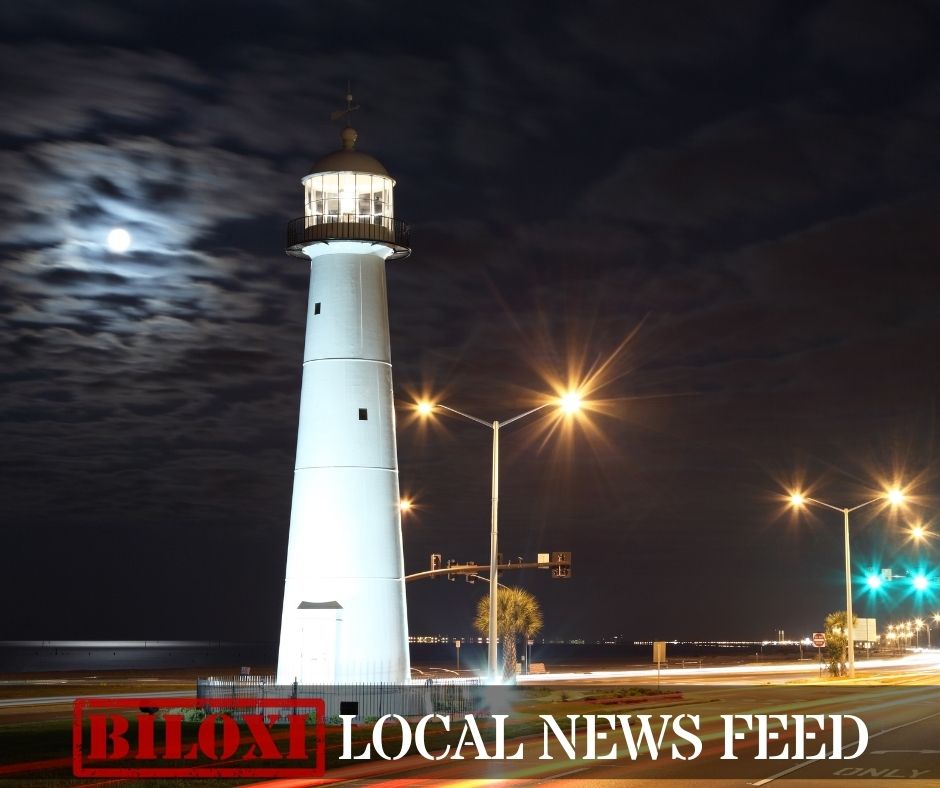News from the South - North Carolina News Feed
Tips: Experts urge parents to address online safety with kids
SUMMARY: Experts urge parents to actively address online safety with their children by understanding what content kids encounter most and how to keep them protected. Stacey Garrett from the National Center for Missing and Exploited Children highlights rising risks, including online enticement and exploitation involving generative AI. In 2024, the center’s Cyber Tip line received nearly 30 million reports of suspected child sexual exploitation. Parents should monitor their kids’ online interactions and limit shared personal information. While technological tools and platform restrictions help, regular, trusting conversations are essential for children to feel safe discussing their online activities and for parents to stay informed.
As students return to classrooms across the region, experts are urging parents to prioritize conversations about online safety.
More: https://abc11.com/post/online-safety-tips-experts-urge-parents-address-students-return-school/17634432/
Watch: https://abc11.com/watch/live/11065013/
Like us on Facebook: https://www.facebook.com/ABC11/
X: https://twitter.com/ABC11_WTVD
TikTok: https://www.tiktok.com/@abc11_eyewitnessnews
News from the South - North Carolina News Feed
11 months after Helene, commercial rebuilding in Asheville has become a longer slog than anticipated • Asheville Watchdog
In the immediate aftermath of Tropical Storm Helene’s destruction last year, business owners’ optimism about rebuilding ran high in Asheville, even in the face of the enormity of the task ahead.
But 11 months later, that optimism has evolved into tempered determination for many, and a realization that rebuilding will encompass years, not months.
Throughout the city, which sustained particularly heavy damage in the River Arts District and Biltmore Village, adjacent to the French Broad and Swannanoa Rivers respectively, it’s a similar story: Rebuilding is going slower than expected.
Helaine Greene, owner of the Riverview Station property in the RAD, knows this all too well.
At two stories and 110,000-square feet, Riverview Station looms large in the district and maybe even seemed invulnerable to major damage from a flood. But Helene caused the French Broad to leap its bank and crest at nearly 25 feet, high enough to swamp even the second floor of Riverview Station, home to hundreds of artists and craft makers.

“We’re not as far along as we had hoped at this point, but we’ve been making steady progress over a period of time,” Greene said. “It’s a very large building, and there was a lot of cleanup, because it was 110,000 square feet.”
That cleanup includes mucking the brick structure out, pressure washing, hauling off destroyed materials and some remediation.
“We haven’t really started on the rebuilding yet,” Greene said late last month. “We do have permits, but it’s just slower than we had anticipated.
“We’re thinking that (a reopening date) might be almost a year from now — next spring, or maybe it would be June or July of next year,” Greene said. “It’s further out than where we are.”
Even those business owners with less damage have had to decide whether to rebuild, and if so, how to finance it – a complex calculation that often translates into a slower rebuild timeline.
“Nothing is going to be the same that it was. It’s a long slog,” Mark Matheny, director of the city’s Development Services Department, said. “People, as we all know — and we’re feeling (it) — people are just tired of having to deal with what the storm did. But the reality of it is, it’s a decade.”
Rebuilding in the River Arts District
About 80 percent of the RAD, which follows the French Broad from Amboy Road to the north of I-240, sustained damage. A century-old former industrial area, the RAD became home to hundreds of artists over the past two decades, as well as dozens of bars, restaurants and other businesses, drawing both locals and tourists.
Eddie Dewey, a partner in Foundation Studios LLC, which owns 11 buildings in the RAD, mostly along the Foundy Street corridor, said rebuilding is taking longer than the group had hoped. All of Foundation Studios’ buildings took on water and sustained serious damage, and one — the former Plēb wine bar location — got swept away.

But, Dewey says, Foundation Studios has a bold plan for this year and beyond: “We are building back everything we have.”
Foundation Studios’ buildings comprise 127,000 square feet of space, and Dewey said the goal is to have “about 70 percent of our square footage (open) in the next six months.”
Four buildings should be up and running this fall, perhaps by Sept. 27, the storm’s anniversary, Dewey says, “and if we can do that, we’re gonna be pretty happy.”
Those four are the Marquee art and craft gallery at 36 Foundy St., Wedge Brewing in 5 Foundy St., the Foundation Woodworks building at 17 Foundy, and the former Skate 828 building at the southern end of the strip of buildings. The popular 12 Bones Smokehouse will not rebuild in the building it shared with Wedge, but its south location in Arden is open.
It will take longer to rebuild Foundation Studios’ other seven buildings, Dewey says, perhaps as much as two and a half years.
Dewey said Foundation Studios faces $6 million to $7 million in damages just to its Foundy Street properties, and so far it’s not received any federal dollars to help with reconstruction. It did receive about $500,000 in flood insurance, which ended up being about the cost of the debris cleanout.

Still, Dewey says, its buildings are in better condition now than they were in 2015 when the partnership bought the then-neglected properties, which had also seen flood damage in 2004.
Every property owner has a different story to tell about how they’ve navigated complicated financial situations, flood insurance and securing money to rebuild, Dewey says. Property owners also have to know if their building meets the “50 percent rule” for rebuilding: If a commercial property sustained more than 50 percent damage in the flood, it would have to be rebuilt to the latest, more stringent — and expensive — state building codes.
“There’s places where it makes sense to come back and, and there’s people that have the money to do it in front of the curve,” Dewey said. “And there’s people that need help to get back.”
A snapshot of major damage
Matheny, the city Development Services Department director, said his office started doing damage assessments within days of the Sept. 27 storm.
“We started that the first week, and we did two rounds of assessments,” Matheny said. “We ended up evaluating 1,615 buildings that we tagged.”
Many of these buildings had minor damage. Most that were flooded were in commercial districts while residences tended to have damage from fallen trees.
By the end of last month, the city had gotten a good snapshot of how many buildings sustained major damage.
“It’s just less than 50 buildings that we can identify as ‘unsafe buildings,’” Matheny said. The city restarted its enforcement procedures for these buildings this month, but Matheny noted that the process mostly requires property owners to secure the building and grounds, not necessarily demolish the structures.
Building permit applications have been steady, an indication of the desire to rebuild.
As of July 30, the city had issued 945 permits since Helene, with 469 of those commercial and 476 residential. The total value on the commercial side stood at $74 million, while the residential value came in at $17 million.

Some business owners, especially those in historic districts like Biltmore Village, have said the rebuilding process has been complicated by conflicting information about building code requirements. For one business owner, who asked not to be identified for fear of jeopardizing their permitting process, applying for a waiver of the 50 percent rule for historic structures “became so onerous that we rebuilt without seeking this variance.”
Despite the slow pace of recovery, local residents likely have spotted some rebuilding success stories:
For instance, Hi-Wire Brewing reopened its beer garden in the RAD, and most businesses in the upper RAD above the railroad tracks, have remained open and the area is thriving. Numerous events have been held in the upper RAD to showcase the work of artists who were displaced.
Most Biltmore Village businesses say they’ll return
In Biltmore Village, the Grand Bohemian Hotel reopened in early May, and Cava, a fast-casual restaurant built on a slightly higher elevation, was able to return to business in mid-June.
In all, 17 businesses have reopened in Biltmore Village, according to historicbiltmorevillage.com, a business association that tracks openings on its page. The area contains about 50 businesses, mostly in the century-old homes constructed for workers building the Biltmore Estate, homes that were transformed into businesses last century. The historic village area is in a flood plain.
But the “greater village area” hosts another 100 or so enterprises, including fast food restaurants, chains and retail spots.
Kara Irani, director of public relations for the association, said it’s been pleasantly surprised by businesses that have been able to get back up and running, as well as interest from business owners thinking about a new location in the village. She talked to Asheville Watchdog recently inside New Morning Gallery, an upscale art gallery that flooded but reopened in May after an extensive cleanup.
“Right now, we have confirmed at least 65 to 70 percent of the businesses who were here prior to the storm are coming back, which is fabulous,” Irani said.
For that 30 to 35 percent who aren’t returning, reasons run the gamut.
“If there were people who had businesses but they didn’t own the property, then that’s a very common thing for those businesses to be looking for another location, because they don’t have to worry about what the rebuild is going to look like,” Irani said. “The property owners are kind of dictating what that looks like.”
Some business owners lost everything and cannot financially reboot their business, especially those who had stocked up for a busy fall season last year and then got wiped out by Helene. Some had no flood insurance, and others lacked the capital to rebuild.
“And then I think with the other folks, some people are not coming back into the village just because they don’t want to be hit with a flood again, and I totally understand that,” Irani said.
Overall, rebuilding is in what Irani calls “phase two of the cold, hard reality.
“Initially, it is a lot of paperwork and searching for money and trying to figure out those immediate needs,” Irani said. “And now we’re starting to look at what the mid- to long-term implications of all of these things are.”
If more funding is uncertain for businesses, and the owners face an arduous rebuilding path, they have to make tough choices, Irani said, including, “Am I going to go further into debt to try to keep this moving forward? When am I going to actually be able to get the equipment I need? When am I going to be able to get the permitting?
“It’s all of those pieces that have to come together at the right time to enable them to even open their doors, much less start capturing revenue again,” Irani said.

One major building that’s unlikely to open again is Biltmore Station, formerly a 19-unit, nearly 62,000-square-foot retail building that housed the Ichiban Japanese restaurant, a Jimmy John’s and other retail businesses before the storm. Dewey is a partner in a group that owns the building (separate from the RAD partnership), which sits on 3.5 acres adjacent to the Swannanoa River.
“(With) Biltmore Station, we’re not rebuilding it,” Dewey said. “We’re talking with the city and the state for a flood mitigation site.”
The Swannanoa River in that area tends to generate “nuisance flooding” almost every year, and it has flooded the building severely twice, in the major flood of 2004 and again last year.
“We just don’t think it’s the right thing to do,” Dewey said of rebuilding there.
So first, they’re looking at mitigation through a federal program in which the government may buy a property at pre-storm market value, as long as the property owner agrees not to rebuild there. Nothing is set yet, but mitigation is the first choice, as that could include letting the property revert to a natural state or be used for parking.
“We are in the mitigation program now, and we’re looking at that,” Dewey said. “We’re also looking at redevelopment, up and out of the floodplain. The absolute last scenario we would do is rebuild what we have.”
About two blocks from the Swannanoa, another Biltmore Village mainstay, the Corner Kitchen restaurant, reopened Aug. 11.

Partners Kevin Westmoreland and Joe Scully say it has not exactly been a smooth — or inexpensive — journey. And they feel luckier than most business owners, partly because they have another restaurant downtown, Chestnut, that has continued to provide revenue, and partly because they had money in savings and had a good contractor available to start work immediately on the rebuilding.

The Corner Kitchen, located at 3 Boston Way, occupies a two-story former home built in 1905 as part of George Vanderbilt’s original Biltmore Village. The restaurant flooded to the second floor, incurring about $600,000 in damage and a revenue loss of $1.5 million.
Within three weeks of the flood, Westmoreland and Scully filed two applications for Small Business Administration loans, one for the Corner Kitchen, one for Chestnut.
“The first part of that was as smooth as silk,” Westmoreland said in late July. But things have grown more complicated.
“We’re still waiting on about a third of the SBA loan money that we’ve been approved for,” he said. “It has a lot of moving parts that maybe a bank wouldn’t have, so we’re 10 ½ months into the process and still waiting on the last part of that funding.”
Working with their flood insurance company was even more aggravating. It took seven and a half months to get that money in hand.
The partners declined to identify their insurance company, which they said wanted pictures of equipment that was destroyed or had literally floated away.
Higher-level company officials “wouldn’t answer emails, phone calls, nothing,” Westmoreland said.
“Joe and I tended to be as calm as possible,” he said, with more than a hint of sarcasm.
But most Biltmore Village have not reopened, and that’s hurting foot traffic. Westmoreland thinks it’ll be next year before most are back.
“We are starting to see more activity,” Westmoreland said. “Today we pointed to all the buildings they’re working on actively — four or five we can see from the front porch. People are inside rebuilding interiors, so that’s a great sign.”
Benjamin Mitchell, vice president of administration for Biltmore Property Group, also serves as president of the board of the Historic Biltmore Village Association. He said this summer that his company’s property at 10 Brook St., which houses multiple national chains, is coming back strong.
“They’ve all drawn permits and have been working for quite some time,” Mitchell said. “The major nationals are a little bit ahead of the curve. They have lots of stores. They have dedicated construction teams and things like that. So they’re getting out there in the lead.”
When the Brook Street building was constructed in 2007, it was elevated about 10 feet above the river level as a flood prevention measure, with the ground level being parking.
But after the Swannanoa crested at over 27 feet, the second level shops had more than 8 feet of water inside. Every shop had to be gutted down to its studs.
The earliest the national chain stores will reopen will be September, with October being a more realistic goal, Mitchell said. The fall is Asheville’s highest tourist visitation time, and the holiday season also remains vital.
“I would think that anything holiday (related) is critical to their bottom lines, especially in a grand opening scenario and all that,” Mitchell said. “But that’s a moving target. They’re just going to take their time and not get ahead of themselves. Like I think Williams Sonoma says, ‘Coming back fall or winter holiday 2025.”
With the mom-and pop-stores in the village, “it’s a mixed bag. It’s just everybody’s individual story on that,” Mitchell said.
“Some of them, I think, are still dealing with insurance companies or the lack thereof, and trying to figure out if, ‘Am I ready to retire or whatever?’” Mitchell said.
Dewey, the Foundation Studios partner, said rebuilding likely will continue to take more time than anyone initially hoped, but now that a clearer picture has emerged, so have more realistic timelines.
“I think the big statement for us is, you know, we’re leaning in, we’re coming back, We’re trying to open businesses and get folks back to work,” Dewey said. “And that’s been our story for the last eight months, and we can see the light at the end of the tunnel now.”

Irani takes heart in small steps, like the sign on the badly damaged Moe’s Southwest Grill building that says it’s slated for demolition, or the ongoing reconstruction of the upscale McDonald’s in the middle of the village, which featured a grand piano inside and a pebbledash exterior that matched the historic architecture.
While the village’s bread and butter is its historic buildings, Irani knows that the area is greater as a whole, and visitors and locals want to see all of it return to something resembling the “before Helene” period. She notes with a smile that the Hardee’s burger restaurant “just quietly opened,” another step toward that normalcy.
Irani said the message she’s hearing from merchants and business owners isn’t one of giving up but rather, “What’s next?” More businesses opening will translate into more visitors for all of the village, she said.
“The more that people see that Biltmore Village is open, the more they’re going to want to come back and ask the question that everyone asks when they come in New Morning Gallery, which is, ‘How high was the water?’” Irani said with a laugh.
“Yeah, it actually got up to two inches beneath the ceiling downstairs.”
Asheville Watchdog welcomes thoughtful reader comments about this story, which has been republished on our Facebook page. Please submit your comments there.
Asheville Watchdog is a nonprofit news team producing stories that matter to Asheville and Buncombe County. John Boyle has been covering Asheville and surrounding communities since the 20th century. You can reach him at (828) 337-0941, or via email at jboyle@avlwatchdog.org. The Watchdog’s local reporting is made possible by donations from the community. To show your support for this vital public service go to avlwatchdog.org/support-our-publication/.
Related
The post 11 months after Helene, commercial rebuilding in Asheville has become a longer slog than anticipated • Asheville Watchdog appeared first on avlwatchdog.org
Note: The following A.I. based commentary is not part of the original article, reproduced above, but is offered in the hopes that it will promote greater media literacy and critical thinking, by making any potential bias more visible to the reader –Staff Editor.
Political Bias Rating: Centrist
This content provides a detailed, factual report on the rebuilding efforts in Asheville following Tropical Storm Helene. It focuses on business owners’ challenges, city department responses, and insurance complexities without advocating for political ideologies, policies, or partisan viewpoints. The tone is neutral and informative, emphasizing local recovery and community resilience rather than political debate, placing the content squarely in the centrist category.
News from the South - North Carolina News Feed
Sunday News on WRAL – Sunday, August 24, 2025
SUMMARY: On Sunday, August 24, 2025, WRAL’s Laura Lavine reports a 20% chance of afternoon rain with cloudy skies and highs in the low to mid-80s. Tomorrow marks the new school year start for most students, including Wake and Durham districts, now using Infinite Campus for grades and attendance instead of PowerSchools. NC Highway 12 in Dare County reopened at 5 a.m. after Hurricane Aaron, though some areas remain sandy and wet, requiring cautious driving. The 49th annual Lazy Days Arts and Crafts Festival in downtown Kerry concludes today at 5 p.m., featuring over 250 artists, live entertainment, food, and activities.
Sunday News on WRAL – Sunday, August 24, 2025
News from the South - North Carolina News Feed
Democratic congressional candidate Moe Davis suddenly quits his “kick-ass” campaign with a Facebook slap at party leaders • Asheville Watchdog
In a grievance-laced midnight Facebook post, Democratic congressional candidate Moe Davis dropped out of the race Saturday, effectively positioning Fairview farmer Jamie Ager as the party’s frontrunner to take on Republican Rep. Chuck Edwards in the 2026 general election in the state’s 11th Congressional District.
Davis’s decision came just hours before he, Ager and three lesser-known candidates were to address a Democratic Party fundraiser marking the unofficial kickoff to the primary campaign. The NC-11 Gala had become entangled in an intraparty feud ignited by Davis, who protested that party leaders were positioning Ager as the favorite by giving him a keynote speaking spot at the dinner.
Ager, the CEO of the historic Hickory Nut Gap Farms and a member of a politically prominent family, has previously said he was unaware of any favoritism and welcomes primary challengers. But in comments attached to his Facebook post, Davis told supporters it was futile for him to continue to campaign in hopes of winning the nomination in March.
“I’m grateful to everyone who supported my effort to kick ass for the working class in western North Carolina,” Davis, a retired Air Force lawyer, wrote. “But at the end of the day you can’t overcome the overwhelming weight of the party’s dynasties who have aligned behind the status quo.
“Tonight I concede to John Ager,” he continued, referring to the patriarch of the Ager family. “He cleared the deck to pass down his state House seat to his son Eric in 2022 and he’s doing the same for his son Jamie in 2026.”
Jamie Ager is named after his grandfather, James “Jamie” Clarke, who represented the region in Congress from 1987 to 1991, and for a decade before that in the state Assembly. Davis’s reference to the “party’s dynasties” derived from this.
“[P]olitical office is a family heirloom that gets handed down like it’s grandaddy’s pocket watch,” he wrote.
Davis’s departure caught party leaders by surprise, but apparently without regret. Beth Hampton-Jones, interim chair of the Democratic Party’s District 11 organization, told Asheville Watchdog that Davis had little support within the party.
“After losing in the 2020 election and burning bridges within the party with his aggressive style of blame and name-calling, I’m not sure why he thought he could build real support for his campaign without the Democratic base,” Hampton-Jones said.
Davis, a retired colonel, alienated many party workers and voters with an aggressive campaign style, which he embraced as necessary to confront Republicans in the Trump era. But his sharp-edged social media attacks were aimed as often at other Democrats – whom he regarded as “weak” – as they were at Republicans and Edwards.
In the days before the fundraiser, Davis took direct and personal swipes at state Democratic Party chair Anderson Clayton and campaign-strategist Grayson Barnette. He blamed them for pushing Ager’s candidacy despite the party’s rule prohibiting party officers from endorsing individual candidates before primary elections.
“With the party lined up behind one candidate, I couldn’t see a way to keep the campaign afloat until the primary in March,” Davis wrote, responding to a supporter’s appeal that he continue to fight. To another supporter, he wrote: “[W]hen the head of the state party publicly supports one candidate and her senior adviser manages that candidate’s campaign, it’s game over.”
Western Carolina University political-science professor Christopher Cooper described Davis’s departure as a demonstration of “the invisible party in action. Even at a time when both parties are shedding members, candidates need support from the party establishment” to succeed, Cooper told Watchdog.
The party leadership’s ill-disguised search for an alternative to Davis focused early on Ager as being a strong competitor against Edwards, especially in the rural and conservative counties that have gone heavily for Trump. In addition to the family’s historic ties to the region, party activists contended privately that as a successful farmer and entrepreneur, Ager could win voters beyond heavily Democratic Buncombe County and the other progressive pockets scattered across the district’s 16 counties.
It’s too early to know whether this intraparty feud will weaken Ager’s ability to oust Edwards 14 months from now. Davis told The Watchdog in a text message early Saturday, “I’m not endorsing anyone,” though he stressed, “I’m not supporting Chuck Edwards.”
Watchdog contacted Ager, Clayton and Barnette for comment but received no replies before deadline. The story will be updated to include any responses.
Asheville Watchdog welcomes thoughtful reader comments on this story, which has been republished on our Facebook page. Please submit your comments there.
Asheville Watchdog is a nonprofit news team producing stories that matter to Asheville and Buncombe County. Tom Fiedler is a Pulitzer Prize-winning political reporter and dean emeritus from Boston University who lives in Asheville. Email him at tfiedler@avlwatchdog.org. The Watchdog’s reporting is made possible by donations from the community. To show your support for this vital public service go to avlwatchdog.org/support-our-publication/.
Related
The post Democratic congressional candidate Moe Davis suddenly quits his “kick-ass” campaign with a Facebook slap at party leaders • Asheville Watchdog appeared first on avlwatchdog.org
Note: The following A.I. based commentary is not part of the original article, reproduced above, but is offered in the hopes that it will promote greater media literacy and critical thinking, by making any potential bias more visible to the reader –Staff Editor.
Political Bias Rating: Centrist
The content presents a factual and balanced account of an intraparty dispute within the Democratic Party, focusing on candidate dynamics without overtly favoring one side or expressing strong ideological positions. It highlights perspectives from multiple actors, including party leaders, candidates, and political analysts, maintaining a neutral tone throughout. The article refrains from partisan language or advocacy, reflecting a centrist approach to political reporting.
-
News from the South - West Virginia News Feed7 days ago
Religious exemption debate front and center amid new school year in WV
-
News from the South - Arkansas News Feed7 days ago
Trump, Zelenskyy exit White House talks hopeful about security guarantee for Ukraine
-
News from the South - Alabama News Feed6 days ago
U.S. agriculture secretary announces end to subsidies for solar panels on farmland
-
News from the South - Kentucky News Feed5 days ago
First of its kind clinical trial offers new hope for Kentuckians at risk of dementia
-
News from the South - West Virginia News Feed6 days ago
Free AI testing platform rolled out to federal employees
-
News from the South - Virginia News Feed7 days ago
Low 80s and winds possible from Hurricane Erin
-
News from the South - Georgia News Feed6 days ago
Don't eat this shrimp sold at Walmart due to possible radiation contamination: FDA
-
News from the South - Arkansas News Feed6 days ago
Cities across the US are embracing AI guidelines for local government workers










































